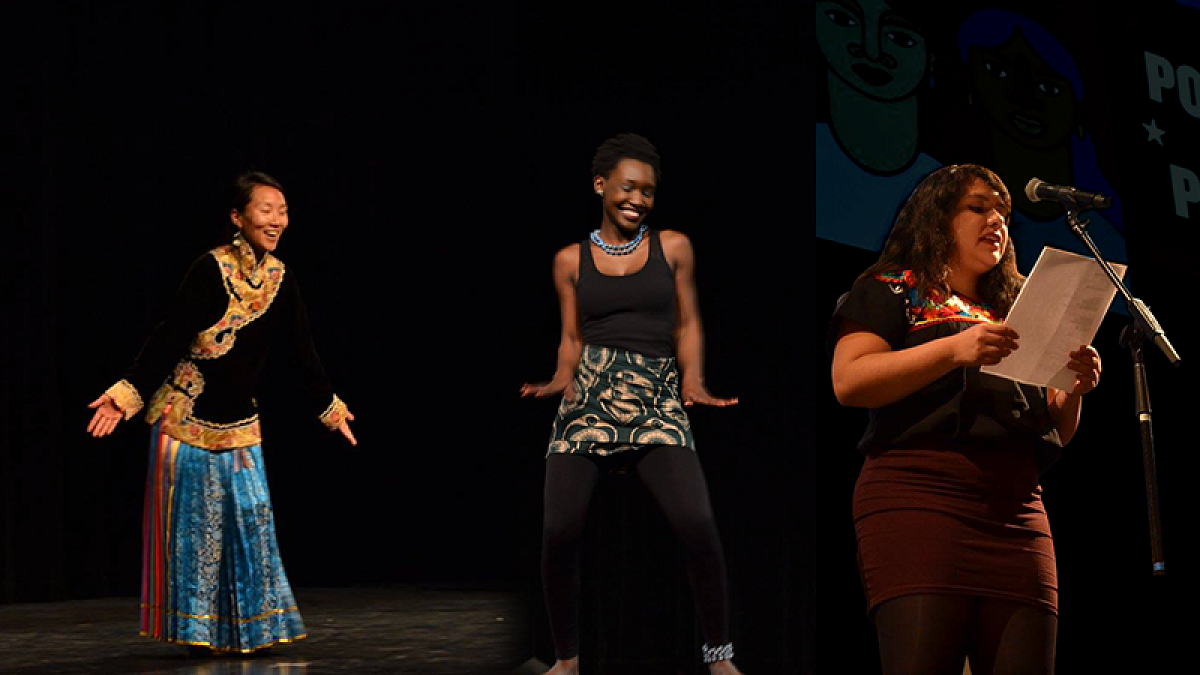Black women’s empowerment, international women’s issues and cultures, the psychology of racism and the #MeToo movement are among the topics being addressed during Women’s Heritage Month at the UO.
Officially known as Women’s History Month by the federal government, the UO celebrates Women’s Heritage Month each year with a variety of events that celebrate, honor and highlight the work and contributions of women. Other issues that will be explored on campus this month include women in science, migrant domestic workers and the Supreme Court’s Roe vs. Wade decision on abortion.
Lesley-Anne Pittard, assistant vice president for campus and community engagement, says she sees all heritage month planning as moving the university and community forward and believes this year’s Women’s Heritage Month has particular significance.
“Each month of cultural heritage programming brings new opportunity and possibility. This political season brings particularly unique prospects for Women’s History Month,” Pittard said. “With the support of the Women’s History Month planning group, we were able to identify interdisciplinary and intersectional topics that would allow our campus to be informed, empowered and enabled to act.”
Events are planned throughout March across campus and in the community. All events are free and open to the public.
Coming up this week, the community group Mobility International USA will celebrate International Women’s Day by honoring disabled women activists on March 8 in their downtown Eugene offices.
Also, the UO Black Women of Achievement will present awards to black women at their annual Women’s Empowerment Luncheon at noon on March 10 at the Living Learning Center South. Students, faculty, staff and community members will be honored.
Lectures, panels and films are also part of the month’s celebrations. The Center for the Study of Women in Society presented a talk about migrant domestic workers with Rhacel Salazar Parreñas, professor of sociology and gender studies at the University of Southern California today, March 7.
Focusing on sexual abuse and harassment will be the “#MeToo — Now What?” event March 12 at the Ford Alumni Center. The event will include a discussion of the #MeToo movement; a moderated panel discussion addressing legal issues, intersectionality, and campus and community priorities; small group discussions to help set agendas; a resource fair; and creation of a call to action.
Dr. Alisha Moreland-Capuia will speak on “The Psychological Impact of Racism” at 12:15 p.m. March 14 at the Erb Memorial Union’s Redwood auditorium, and astronaut Wendy Lawrence will speak at the UO Women in Graduate Science annual fundraiser at 5:30 p.m. March 17 in the Ford Alumni Center ballroom.
Also, the Schnitzer Cinema and Discussion series will present the film “Acts and Intermission,” about the life of anarchist Emma Goldman, with a Skype conversation with the director. It will take place at 7:30 p.m. March 14 at the Jordan Schnitzer Museum of Art.
Earlier this month an activity fair at the Erb Memorial Union on March 1 had several events to honor the 1973 Supreme Court decision of Roe vs. Wade, and International Women’s Day was celebrated by the UO Women’s Center on March 7 at the Erb Memorial Union ballroom. Students of all genders honored women and their global cultures and celebrated strides towards gender equity and international peace.
Women’s History Month was initiated in the U.S. in 1978 as “Women’s History Week” by the Education Task Force of the Sonoma County California Commission on the Status of Women. After the great success of the local celebration, dozens of schools planned special programs for Women’s History Week.
In February 1980 President Jimmy Carter issued the first presidential proclamation declaring the week of March 8 “National Women’s History Week.” In 1987, Congress declared the entire month of March as National Women’s History Month in perpetuity. A special presidential proclamation is issued every year.
For more event information, check out the Women’s Heritage Month page on the Division of Equity and Inclusion website.
—By tova stabin, University Communications


